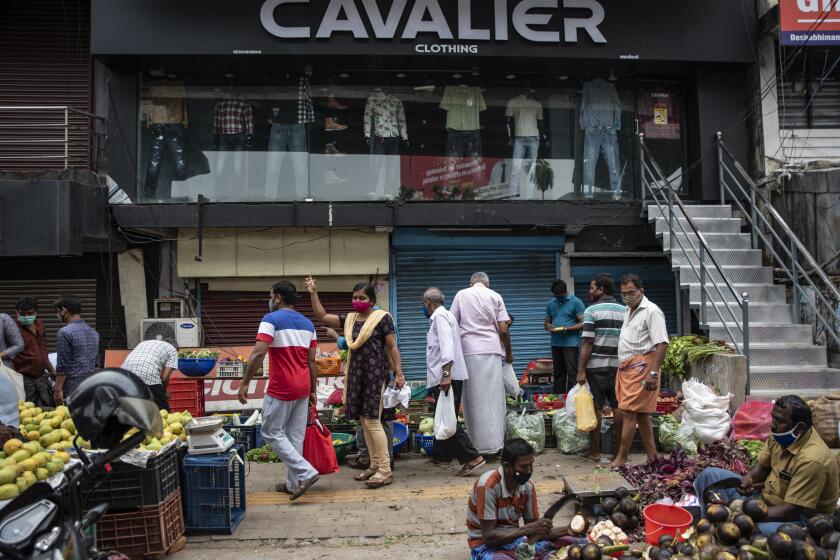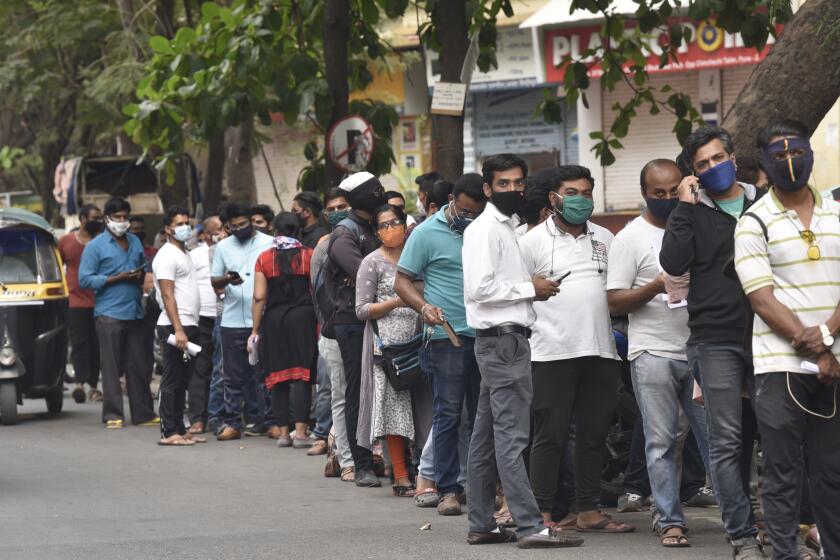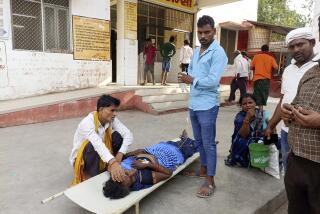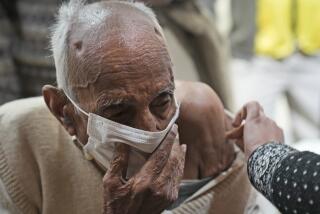India reports global record of 314,000 new coronavirus cases
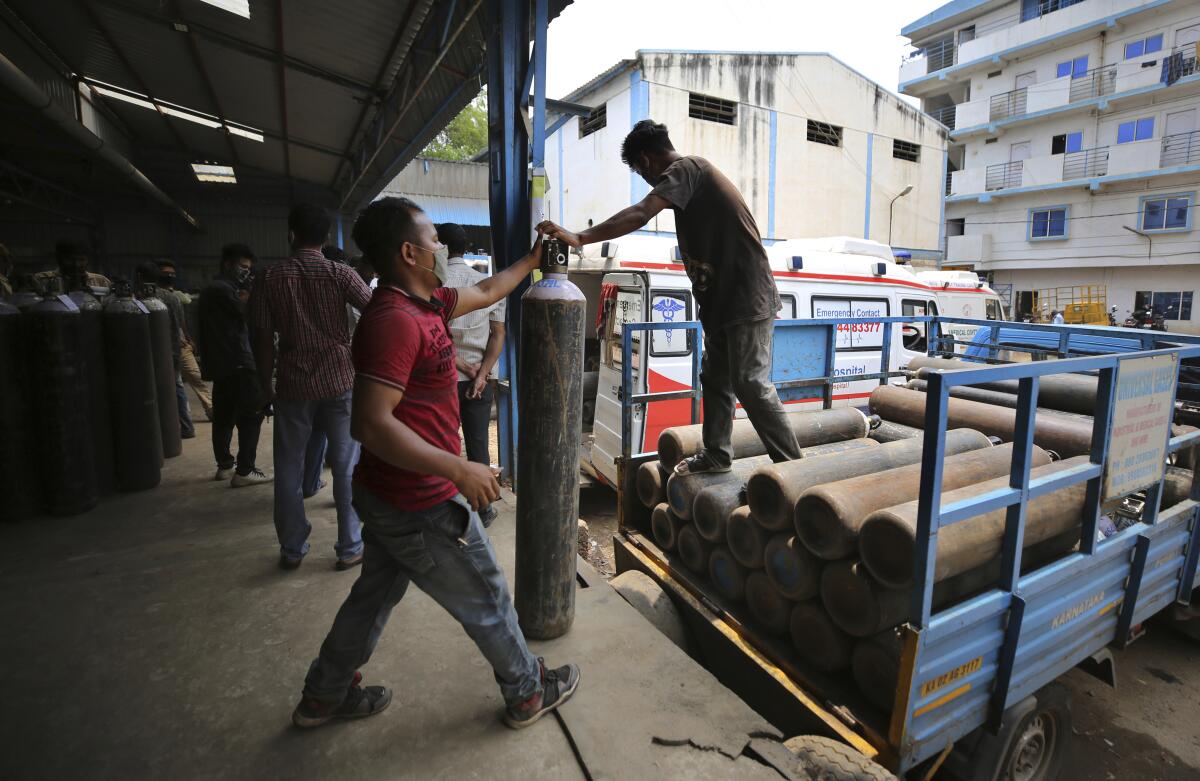
- Share via
NEW DELHI — India reported a global record of more than 314,000 new infections Thursday as a grim coronavirus surge in the world’s second-most populous country sends more and more sick people into a fragile healthcare system critically short of hospital beds and oxygen.
The 314,000 infections added in the past 24 hours raise India’s total beyond 15.93 million cases since the pandemic began. It’s second to the United States. India has nearly 1.4 billion people.
Fatalities rose by 2,104 in the past 24 hours, raising India’s overall death toll to 184,657, the Health Ministry said.
A large number of hospitals are reporting acute shortages of beds and medicine and are running on dangerously low levels of oxygen.
The New Delhi High Court on Wednesday ordered the government to divert oxygen from industrial use to hospitals.
New Delhi goes into a weeklong lockdown as an explosion in coronavirus cases pushes the Indian capital’s healthcare system to its limit.
“You can’t have people die because there is no oxygen. Beg, borrow or steal, it is a national emergency,” the judges said in responding to a petition by a New Delhi hospital seeking its intervention.
The government is rushing oxygen tankers to replenish supplies to hospitals.
India’s Health Minister Harsh Vardhan said on Thursday that “demand and supply is being monitored round the clock.” He said in a tweet that to address the exponential spike in demand, the government has increased the quota of oxygen for the worst-hit seven states.
Lockdowns and strict curbs have brought pain, fear and agony to many lives in New Delhi and other cities.
In scenes familiar across the country, ambulances are seen rushing from one hospital to another, trying to find an empty bed. Grieving relatives are lining up outside crematoriums where the arrival of dead bodies has jumped several times.
“I get numerous calls every day from patients desperate for a bed. The demand is far too much than the supply,” said Dr. Sanjay Gururaj, a doctor at Bengaluru-based Shanti Hospital and Research Center.
“I try to find beds for patients every day, and it’s been incredibly frustrating to not be able to help them. In the last week, three patients of mine have died at home because they were unable to get beds. As a doctor, it’s an awful feeling,” Gururaj said.
India’s worst surge of the COVID-19 pandemic has affected the global supply of vaccines because of the country’s leading role in manufacturing them.
Yogesh Dixit, a resident of northern Uttar Pradesh state, said earlier this week that he had to buy two oxygen cylinders at $160 each, more than twice the normal cost, for his ailing father because the state-run hospital in Lucknow had run out of supplies.
He bought two “because the doctors can ask for another oxygen cylinder at any time,” he said, adding that he had to sell his wife’s jewelry to meet the cost.
The main cremation ground at Lucknow, the state capital, received nearly 200 bodies on Sunday. Shekhar Chakraborty, 68, described the scene “The bodies were everywhere, they were being cremated on sidewalks meant for walking. I have never seen such a flow of dead bodies in my life,” he said.
In Kanpur, another city in Uttar Pradesh state, 35 new temporary platforms have been set up on Bithoor-Sidhnath Ghat stretch along Ganges River to cremate bodies.
The Health Ministry said that of the country’s total production of 8,300 tons of oxygen per day, 7,275 tons were being allocated for medical use.
It also said that 75 railroad coaches in the Indian capital have been turned into hospitals providing an additional 1,200 beds for COVID-19 patients.
The Times of India newspaper says that the previous highest daily case count of 307,581 was reported in the U.S. on Jan. 8.
More to Read
Sign up for Essential California
The most important California stories and recommendations in your inbox every morning.
You may occasionally receive promotional content from the Los Angeles Times.
